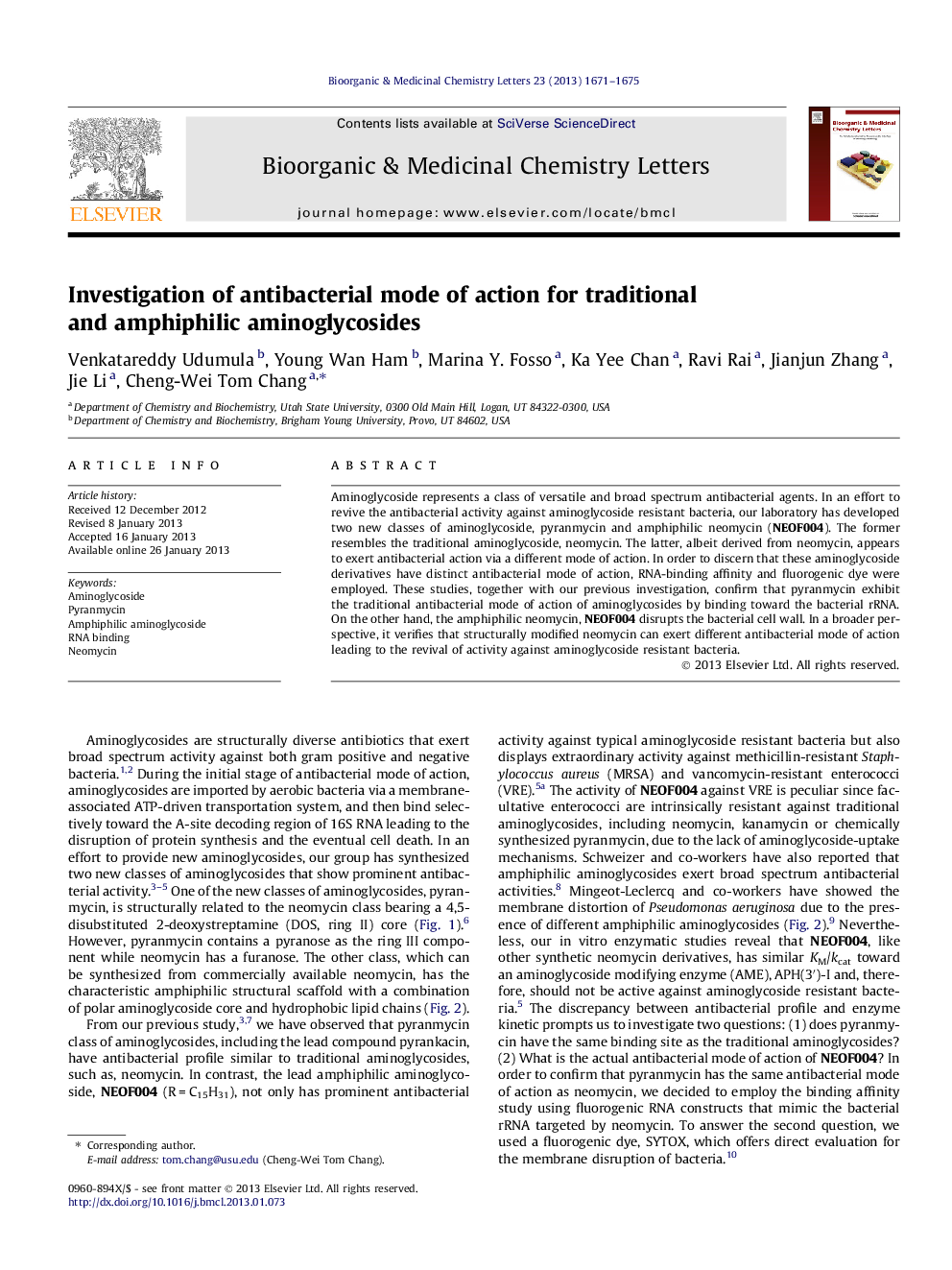| Article ID | Journal | Published Year | Pages | File Type |
|---|---|---|---|---|
| 1370334 | Bioorganic & Medicinal Chemistry Letters | 2013 | 5 Pages |
Aminoglycoside represents a class of versatile and broad spectrum antibacterial agents. In an effort to revive the antibacterial activity against aminoglycoside resistant bacteria, our laboratory has developed two new classes of aminoglycoside, pyranmycin and amphiphilic neomycin (NEOF004). The former resembles the traditional aminoglycoside, neomycin. The latter, albeit derived from neomycin, appears to exert antibacterial action via a different mode of action. In order to discern that these aminoglycoside derivatives have distinct antibacterial mode of action, RNA-binding affinity and fluorogenic dye were employed. These studies, together with our previous investigation, confirm that pyranmycin exhibit the traditional antibacterial mode of action of aminoglycosides by binding toward the bacterial rRNA. On the other hand, the amphiphilic neomycin, NEOF004 disrupts the bacterial cell wall. In a broader perspective, it verifies that structurally modified neomycin can exert different antibacterial mode of action leading to the revival of activity against aminoglycoside resistant bacteria.
Graphical abstractAminoglycoside represents a class of versatile and broad spectrum antibacterial agents. In an effort to revive the antibacterial activity against aminoglycoside resistant bacteria, our laboratory has developed two new classes of aminoglycoside, pyranmycin and amphiphilic neomycin (NEOF004). The former resembles the traditional aminoglycoside, neomycin. The latter, albeit derived from neomycin, appears to exert antibacterial action via a different mode of action. In order to discern that these aminoglycoside derivatives have distinct antibacterial mode of action, RNA-binding affinity and fluorogenic dye were employed. These studies, together with our previous investigation, confirm that pyranmycin exhibit the traditional antibacterial mode of action of aminoglycosides by binding toward the bacterial rRNA. On the other hand, the amphiphilic neomycin, NEOF004 disrupts the bacterial cell wall. In a broader perspective, it verifies that structurally modified neomycin can exert different antibacterial mode of action leading to the revival of activity against aminoglycoside resistant bacteria.Figure optionsDownload full-size imageDownload as PowerPoint slide
